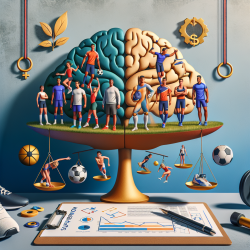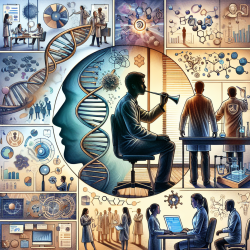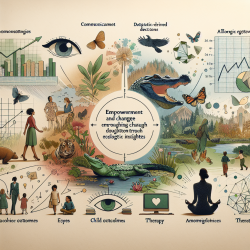Introduction
In the ever-evolving field of sports psychology, understanding the nuanced challenges faced by NextGen athletes is crucial for practitioners aiming to enhance their support strategies. A recent study titled Personal risk factors and types of sport associated with drive for thinness and drive for muscularity in NextGen athletes provides valuable insights into the personal and sport-specific factors influencing eating disorder (ED) symptoms among this unique group. This blog post explores how practitioners can utilize these findings to improve their skills and encourage further research.
Key Findings from the Research
The study identified several personal risk factors and types of sports associated with the drive for thinness and muscularity in NextGen athletes. Key findings include:
- Perfectionistic Aspirations: A significant link was found between perfectionistic aspirations during training and a stronger drive for thinness and muscularity.
- School and Employment Status: Athletes not engaged in school or employment showed a stronger drive for thinness.
- Gender Differences: Male athletes exhibited a stronger drive for muscularity compared to their female counterparts.
- Type of Sport: Participation in team, endurance, and weight-category sports was associated with a higher drive for muscularity, while esthetic sports did not show a significant association with drive for thinness.
Implications for Practitioners
Practitioners working with NextGen athletes can leverage these findings to tailor their interventions and support strategies:
- Address Perfectionism: Develop interventions that help athletes manage perfectionistic tendencies, emphasizing effort and personal growth over body image and performance outcomes.
- Encourage Balanced Lifestyles: Promote engagement in activities outside of sports, such as education or part-time work, to help athletes develop a well-rounded identity and reduce the focus on athletic performance alone.
- Gender-Sensitive Approaches: Recognize the different pressures faced by male and female athletes and tailor support strategies accordingly, particularly in addressing the drive for muscularity in male athletes.
- Sport-Specific Strategies: Implement sport-specific interventions that consider the unique demands and pressures of different sports, particularly for those involved in team, endurance, and weight-category sports.
Encouraging Further Research
While this study provides a solid foundation, there is a need for further research to deepen our understanding of ED symptoms in NextGen athletes. Practitioners are encouraged to engage in or support research efforts that explore:
- The role of coaching and parental influence on athlete perfectionism and ED symptoms.
- The impact of mental health training on reducing ED symptoms in athletes.
- Longitudinal studies to assess the development of ED symptoms over time in relation to personal and sport-specific factors.
Conclusion
By integrating these research findings into practice, practitioners can enhance their support for NextGen athletes, fostering environments that prioritize mental health and holistic development. This approach not only benefits the athletes' well-being but also contributes to their long-term success in sports.
To read the original research paper, please follow this link: Personal risk factors and types of sport associated with drive for thinness and drive for muscularity in NextGen athletes.










